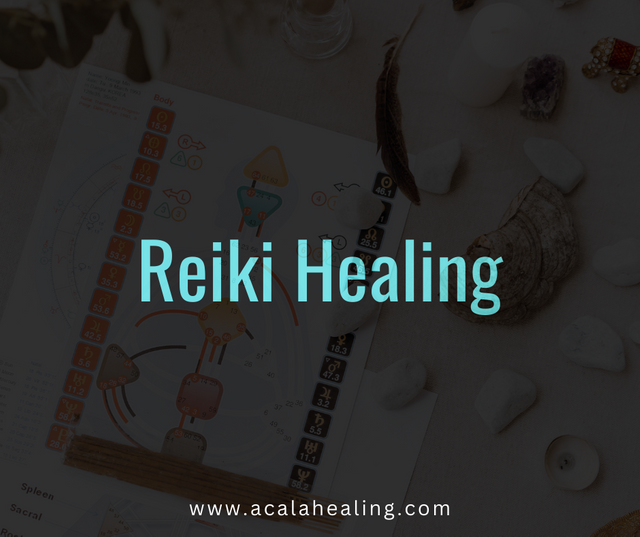
Amidst the chaos of modern life, where stress and the pressures of daily existence can leave us feeling detached and drained, there exists an ageless healing method. This method strives to reinstate equilibrium, foster tranquillity, and tap into the intrinsic potential of our bodies. This practice is known as Reiki, an all-encompassing route to wellness that has stood the test of time. For centuries, it has provided support for physical, emotional, and spiritual healing, offering a holistic approach to overall well-being.
The Essence of Reiki Healing
Reiki, pronounced "ray-key," is a Japanese term that combines two words: "rei," which means universal, and "ki," which refers to life force energy. At its core, Reiki is about channelling universal life force energy through the practitioner's hands to the recipient. This energy is believed to permeate all living things and is essential for sustaining life.
The philosophy underlying Reiki is rooted in the understanding that when life force energy is blocked or imbalanced, it can lead to various forms of illness or discomfort. Reiki seeks to clear and rebalance energy, facilitating the body's natural ability to heal itself. It is often described as a gentle, non-invasive, and deeply relaxing practice.
The Reiki Healing Session
A typical face-to-face Reiki healing session takes place in a calm and serene setting, with the receiver fully dressed and either lying down or comfortably seated. The practitioner starts by gently laying their hands on or near the recipient's body, usually in a precise sequence of hand positions. These places correspond to the body's energy centres, known as chakras, as well as numerous organs and systems.
Reiki sessions can also take place remotely from a distance. In a distance healing session, the practitioner uses their hands or other energy-based tools to channel healing energy to the recipient, who can be located anywhere in the world.
Distance healing is based on the belief that energy can be transferred through space and time. Practitioners believe that everyone has an energy field, which is part of the collective universal field, and by connecting with this field, they can help to restore balance and harmony.
During a healing session, the recipient may feel warmth, tingling, or deep relaxation while the practitioner channels Reiki energy. During a session, some people describe seeing visions or experiencing emotional releases. The experience can be extremely personalised, and each session is distinct.
The Benefits of Reiki Healing
Reiki is known for its potential to provide a wide range of benefits:
1. Stress Reduction: One of the primary benefits of Reiki is its ability to induce a deep state of relaxation. It can help alleviate stress, anxiety, and tension, promoting a sense of calm and well-being.
2. Pain Management: Many individuals find relief from various forms of physical pain after Reiki sessions, such as chronic pain, headaches, and muscle tension.
3. Emotional Healing: Reiki is thought to release emotional blockages and promote emotional healing. It can help individuals process and release pent-up emotions, facilitating a sense of emotional clarity and balance.
4. Enhanced Immune Function: Some studies suggest that Reiki may support the immune system by reducing stress and promoting relaxation, making the body more resilient to illness.
5. Improved Sleep: Reiki's relaxation-inducing effects can lead to better sleep quality and a more restful night's sleep.
6. Increased Energy: Many individuals report increased vitality and energy levels following Reiki sessions.
The Science Behind Reiki
While mainstream science does not fully understand Reiki's mechanics, various studies have been conducted to investigate its effects. Reiki research frequently focuses on its stress-reduction advantages and ability to promote overall well-being. While more thorough research is required, anecdotal evidence and personal experiences of numerous people speak to the significant influence Reiki may have on one's health and quality of life.
Reiki as a Complementary Healing Practice
Reiki must be viewed as a complementary healing practice, which means it can be used in conjunction with traditional medical therapies. Many people utilise Reiki in conjunction with traditional medicine to help them heal faster. Reiki practitioners do not diagnose or prescribe therapies, and they do not obstruct medical operations. Reiki, on the other hand, is a gentle and helpful addition to one's entire health and well-being plan.
Learning and Practicing Reiki
Anyone who wants to learn Reiki can do so. Reiki is divided into three levels: Reiki I, Reiki II, and Reiki III (Master level). Attunements are energetic initiations performed by a Reiki Master to increase one's ability to channel Reiki energy.
Reiki practitioners complete formal training to become certified. A good reiki practitioner spends a lot of time on self-practice, which helps them become clearer channels and allows them to transfer reiki to their clients.
In Conclusion
Reiki therapy is a profound voyage into the mysteries of universal life force energy, not just a holistic practice. It acknowledges the interdependence of mind, body, and spirit, and provides a way to balance relaxation and healing. While Reiki cannot replace traditional medical care, it can be an effective supplemental practice that promotes well-being on several levels.
The beauty of Reiki lies not only in its potential to promote physical and emotional healing but also in the sense of connection and harmony it cultivates within us. In a world that often pulls us in countless directions, Reiki invites us to come home to ourselves, to rediscover our inner equilibrium, and to tap into the limitless wellspring of healing energy that resides within each of us.